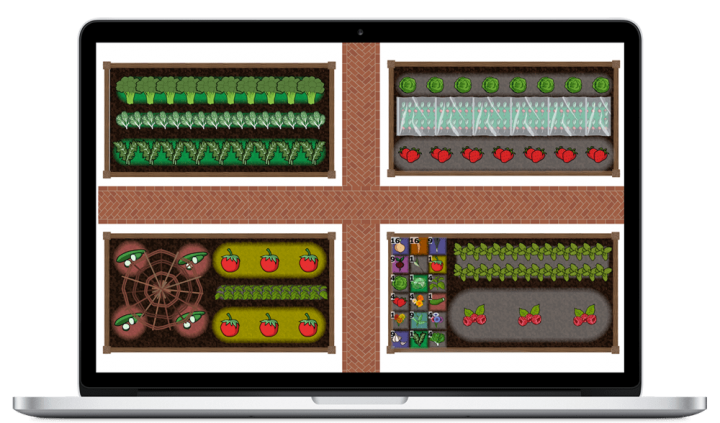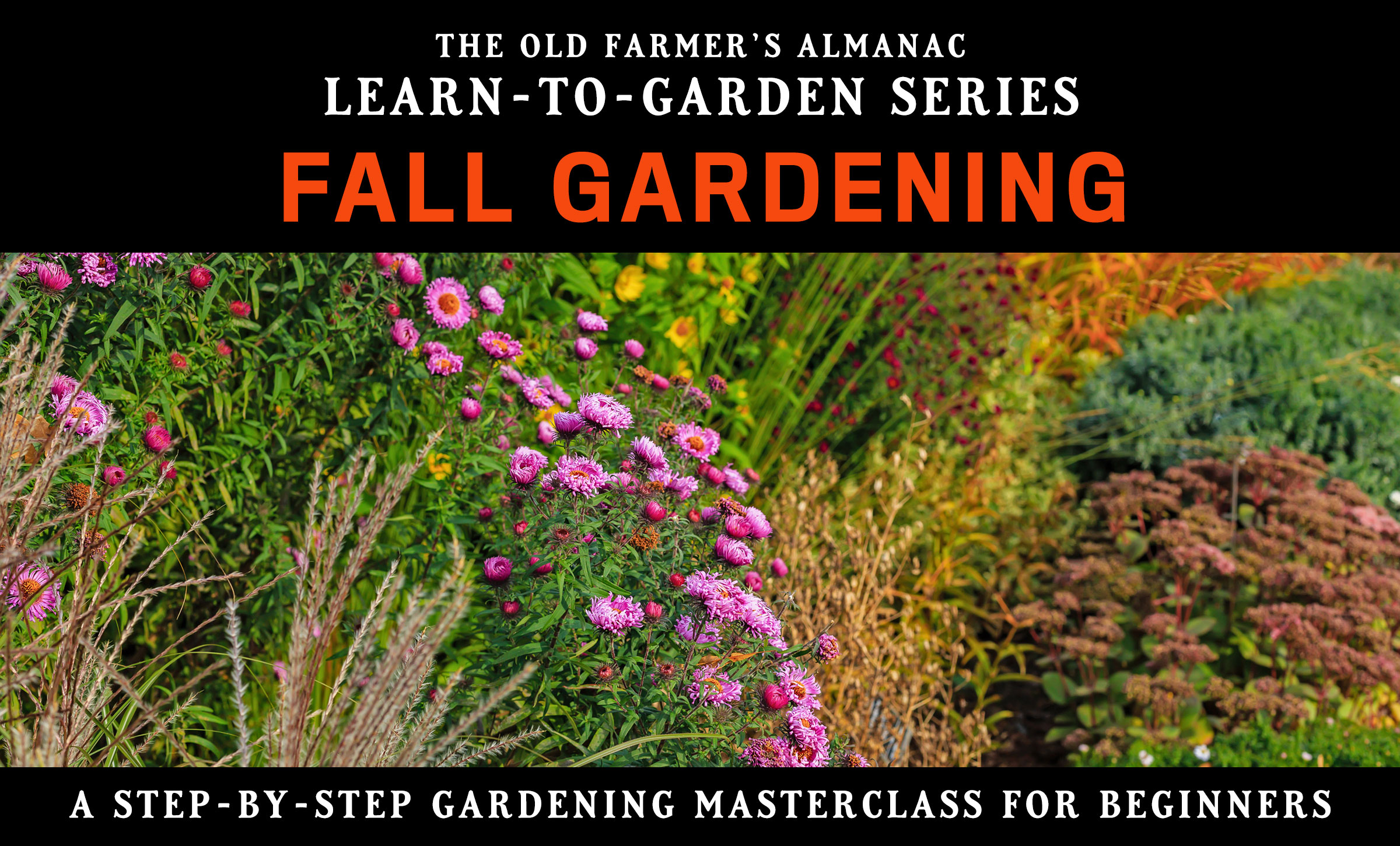How to Plan a Fall Vegetable Garden
Having a fall vegetable garden is fun and easier to do than at other times of year. We also find that veggies are “sweeter” in fall. Even though we call it a “fall garden,” summer is the time to plant your vegetables. Follow our 3 simple groupings and you’ll be harvesting right into the winter!
Why a Fall Garden?
In the fall, the soil becomes moister, the temperatures cool, the climate becomes more comfortable, and there less pests and disease! What’s not to like?
Plus, if you already have a garden, one of the best ways to make your garden more productive is to keep planting to make the most of the space you have. You’ve already done all that work!
In the summer, many spring-planted crops will “bolt” and stop growing because it’s just too hot. However, the fall is perfect for vegetables such as broccoli, cauliflower, and Brussels sprouts which produce the best quality and flavor when they can mature during cooler weather.
Use fast-maturing cultivars whenever possible to ensure a harvest before killing frost occurs.
When to Plant Fall Vegetables
See our Planting Calendar to get the last feasible planting dates for the season. We cover all of the common vegetables. However, if we don’t include a vegetable that you wish to grow, this is how you figure out fall planting dates:
- Look up the fall frost dates for your zip code. This is the time left in the growing season in your location. Some crops need more time and are not suitable for fall planting.
- Your seed packet will tell you the exact days to maturity for the variety you are growing. Back out the “days to maturity.”
- Include time for the harvesting period.
Our fall planting dates also consider which crops are more hardy versus tender, and we’ve also made adjustments for the harvesting period.
Which Plants to Choose
Follow our 3 simple groupings and you’ll be harvesting tasty vegetables right into the winter. (The video demo shows pictures of all these vegetables!)
Group 1 – Warm Soil Sprouters
When grown as fall vegetables, these crops will germinate rapidly in surprisingly warm soil as long as they are kept moist. Sow seeds directly into the ground, just before a period of wet weather is expected if you can. Crops to sow in this group include:
- peas (make sure that you choose quick-growing dwarf varieties),
- beets,
- collards,
- kale,
- leeks (which sown in fall may only reach pencil size before winter comes), and
- radishes.
Group 2 – Start Cool and Transplant
These crops sprout best when soil temperatures stay below 70ºF, but if you wait until the soil cools to plant them, they may not have enough time to mature. Start seeds indoors or in a shady place outside and set out the seedlings as soon as they show their first true leaf. Try growing these crops:
- Chinese cabbage (such as bok choy),
- endive and escarole,
- radicchio,
- lettuce,
- parsley and
- spinach, which can be sown indoors in early fall, and later to be grown through winter beneath a protective frame for harvesting in early spring.
Group 3 – Sow When Soil Cools
Signs of autumn are often apparent by the time the soil cools enough to grow the leafy greens that define many fall vegetable gardens. Cool temperatures tame flavors, so many gardeners wait until after a frost or two have passed to harvest some of the crops in this group. Try growing:
- Arugula,
- cilantro,
- winter varieties of lettuce,
- mache (also known as lamb’s lettuce or corn salad),
- mizuna, and
- turnips, which produce both greens and crunchy roots.
Not all vegetables are suited for fall gardens. But we hope this helps you understand which vegetables are best for fall!
Preparing the Beds
- Remove all previous plant debris, roots, and any weeds. We recommend rotating crops to minimize the pests and diseases that might have affected the last group of vegetables.
- Add a fresh supply of compost or rotted (weed-free) manure.
- If you have fertilized well through the season, no additional fertilizer may be needed. However, 1 to 2 pounds of a general fertilizer, such as 12-12-12, may be applied per 100 square feet of bed area. Be sure to thoroughly mix the fertilizer with the soil. Some gardeners prefer to sidedress the plants with 1 pound of 10-10-10 per 25-30 feet of row placed 6-12 inches from the plants. Apply the sidedressing 2-3 weeks after germination if plants appear to be growing slowly.
- Or, if plants appear to be growing slow and are yellowish, you may water with a liquid fertilizer for vegetables, or apply a light application of a general purpose dry fertilizer along the rows.
Hot Climates
- To cool the soil, first water in the soil, cover with a few inches of straw, then water again. Remove the straw in a few days and sow in the now cooler soil. Replace the straw as mulch once plants are growing. Simply using a thick layer (6 inches or so) of straw on some root crops as carrots can keep the soil from freezing and extend their harvest into early winter.
- Late summer plantings often suffer from a hard soil crust over the seeds which can interfere with seed germination, particularly in heavy soils. Consider using a light mulch of compost or potting soil over the seed row to prevent a crust from forming and keep the temperature favorable for gemination. Seeds of lettuce, peas, and spinach will not germinate well when the soil temperature is 85°F and above.
- If needed, shade the soil with a shade cloth or a board propped on supports; don’t use frost covers which overheat seed.
- Planting the seeds slightly deeper than spring plantings may also be beneficial, since temperatures will be slightly cooler.
- Do not allow seedlings and young transplants to dry out excessively. Apply 1 inch of water in a single application each week to thoroughly moisten the soil. Young seedlings may need to be watered more often during the first week or two of growth. Young transplants may benefit from light shade for the first few days until their new roots become established.
Frost Protection
- Some vegetables are damaged by frost while others are semi-hardy and will withstand a light frost. Yet, other crops are hardy enough to withstand several hard frosts. See our chart with the critical low temperatures for frost damage to vegetables.
- You can extend the fall growing season for tender crops by protecting them through early light frosts. For example, consider row covers or growing in cold frames. Perhaps most simple is a row of straw bales around plants supporting an old window sash or wood frame with corrugated fiberglass panel. If not automatically vented, make sure to vent on hot days so plants don’t get overheated. Since covered and not exposed to rain, make sure to check often for watering. Using cold frames you can have vegetables well into winter, even after snow falls.
Use the Garden Planner for Spacing, Planting/Harvest Dates, and Crop Rotation
Ready to plant? It’s easy to plan out your fall vegetable garden on the Almanac Garden Planner. We have many handy features .

- Use the Garden Planner’s filter to find plants which are suitable for growing in your area in the fall. Click the Filter button (to the left of the plant selection bar), and check the ‘Suitable for Fall Planting/Harvesting’ button. You can then choose the plants you want, and add them to your garden plan.
- Also, work out where to place your fall crops with the Succession Planting feature. Set the dates that your crops will be in the ground by double-clicking on a crop to show the Plant Edit box. Then select the months that your plants will actually be in the ground. By viewing your plan for a particular month, you can now see where there will be gaps left behind after other crops have been harvested. It’s then easy to add crops to these areas to grow in the fall.
- Alternatively, if you have very hot summers and would like to create a whole new plan for fall, just click the New Plan button, select the Follow-on Plan option, alter the plan name, and roll back the year to this year.
Try our garden planner for free for 7 days here! This is ample time to play around, plan your first garden, and see if you like the tool!
Related Articles:
Find more advice on fall gardening from the Almanac gardener:

Fall Flowers and Foliage
Fall Vegetable Gardening
Fall Garden Cleanup
Garden Soil Preparation
Fall Nature
ADVERTISEMENT
My gratitude for all the videos. There is so much to learn in this life. You all make our World a better place! PEACE!!!
wondering what different types of collards or varieties are there? and thier names. thanks
What in the world are endive and escarole and radicchio? Never even heard of them and I'm an old country boy that learned stuff from Paw-Paw Burnett, and I don't think even he would know what these are. haha
what is a good variety of garlic to plant and also how early can I plant my greens, collards and turnip?
There are so many varieties of garlic it's hard to pick one variety. Softneck types are slow to bolt and produce the most number of cloves, but are quite sensitive to extreme cold, so best for milder areas. Hardneck types are much hardier, so more cold tolerant, and they also produce tasty 'scapes' (flower heads) which are great in stir-fries.
Greens, collards and turnips can all be sown/planted from now, so long as you can supply enough water to keep them quenched. They will start producing a good crop from early fall.
Can I cut my current collard plants back to get a growth for fall OR do I need to plant new for fall collards. Thanks
Hi Luke. You can carry on picking individual leaves of collard greens from your plants for as long as the plant keeps producing them. When the plants eventually bolts (flowers) then new leaf production ceases. Collards are a cool-season crop, so if you have very hot summers then sowing new plants in late summer for fall planting and winter harvesting is a good idea. Otherwise, in more northern gardens, you can sow from early summer to plant out in late summer/early fall for harvesting fresh leaves all fall and into early winter.
I would plant new plants.I live in South Carolina and collards planted in March have burned up by July.We now have many sources of fresh plants.Watching our temp and when we get down to highs of 80 dgs. I will start putting plants out.First frost date app. 2/3 week of November.
This will be my first attempt at planting a fall garden. This video makes it look so easy.
In South Carolina Z 8A Fall gardening is drop dead simple.You don't have to fight the heat, pest, most disease.Check your area for what you can plant and go for it.
In S.C. we can plant; collards, spinach, all cole crops - see Google if you need , carrots and more.We are very lucky, these crops will last, in garden, until Springtime. We can pick as we need during Fall and Winter.
Backyard source of many fresh veg. from November to March.
Yes, we are lucky!!
Rick









